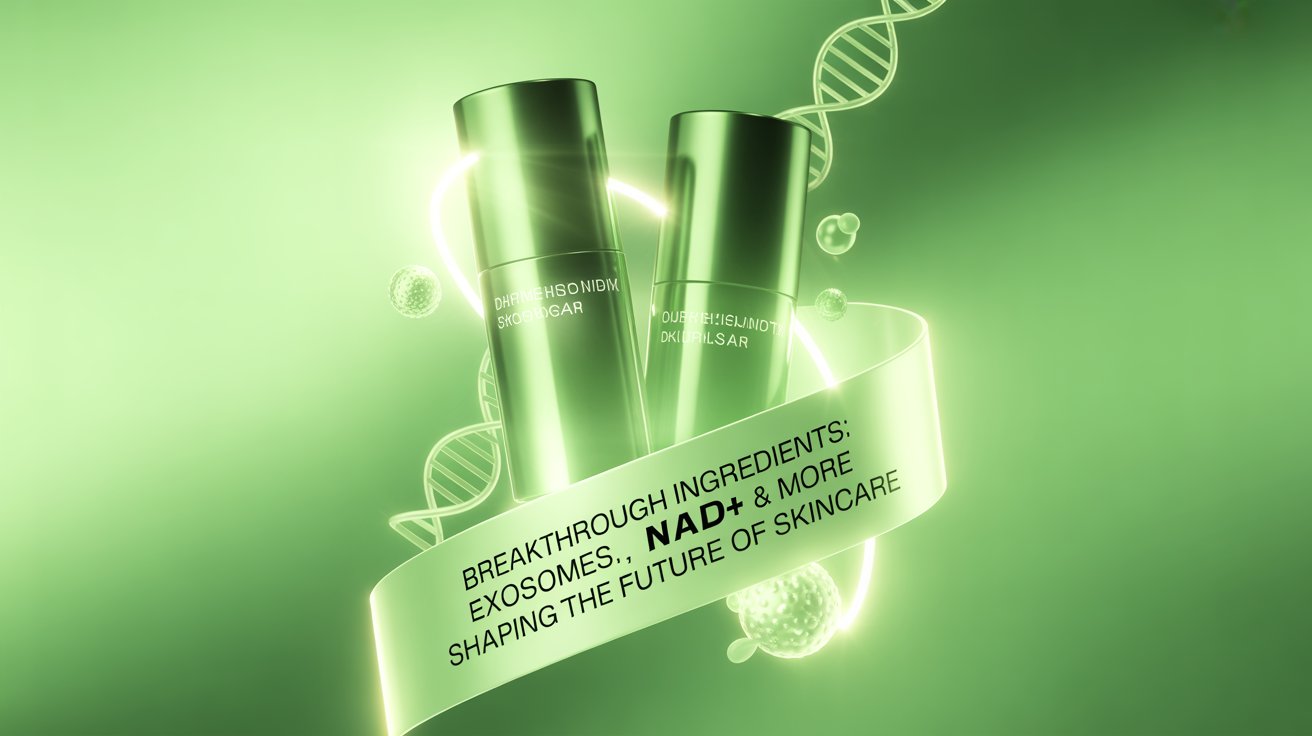Currently Empty: ₨0.00
Every year, new skincare ingredients hit the market—but only a few truly revolutionize how we approach anti-aging and skin health. In 2025, dermatologists and beauty innovators are focusing on cellular-level repair and skin regeneration. The latest buzz? Exosomes, NAD+, and other cutting-edge actives that promise to move skincare beyond surface hydration into true rejuvenation.
1. Exosomes – The Future of Regenerative Skincare
Exosomes are tiny messengers naturally released by cells. In skincare, they act like “cellular text messages,” delivering proteins, lipids, and growth factors that signal the skin to repair and regenerate.
Benefits:
- Boosts collagen and elastin production
- Improves skin texture and elasticity
- Reduces inflammation and redness
- Enhances healing after procedures (like microneedling or lasers)
While still considered an emerging technology, exosome serums and post-procedure treatments are gaining traction in K-beauty labs and U.S. clinics as the next evolution of growth factor skincare.
2. NAD+ – The Longevity Molecule
NAD+ (nicotinamide adenine dinucleotide) is a coenzyme essential for cellular energy and DNA repair. Our natural NAD+ levels decline with age, which is linked to visible aging and slower repair processes.
In skincare, NAD+ and its precursors (like NMN and NR) are being studied for their ability to:
- Support cellular repair and resilience
- Improve firmness and elasticity
- Boost skin energy and radiance
- Defend against oxidative stress
👉 While promising, research on topical NAD+ is still early, so dermatologists advise cautious optimism until more clinical studies confirm results.
3. Polynucleotides (PN / PDRN)
Polynucleotides, often derived from DNA fragments, are trending as injectables and topical actives that enhance skin repair and hydration.
Benefits:
- Stimulate cell turnover and tissue regeneration
- Improve elasticity and fine lines
- Deliver deep hydration and barrier repair
- Safe for sensitive and post-procedure skin
Already popular in Europe and Asia, PN-based products are now gaining traction in U.S. medspas and clinics.
4. Peptide Complexes 2.0
Peptides aren’t new, but next-generation peptide complexes are more targeted than ever. Instead of general anti-aging benefits, new peptides are designed to:
- Mimic growth factors
- Target pigmentation pathways
- Support skin barrier proteins
- Boost firmness with precision
This makes them powerful allies in minimalist routines seeking multi-functional benefits.
5. Botanicals with a High-Tech Twist
Science is also enhancing traditional botanicals to maximize efficacy:
- Snow Mushroom (Tremella) – A natural alternative to hyaluronic acid with antioxidant benefits
- Centella Asiatica (Cica) – Advanced extracts for sensitive skin repair
- Fermented Ingredients – Boosting absorption and potency of vitamins and antioxidants
Final Thoughts
From exosomes that deliver cellular messages to NAD+ molecules supporting longevity, 2025 skincare is all about regeneration at the cellular level. While some of these innovations are still in early research stages, they represent the exciting shift toward healing, prevention, and natural longevity rather than quick fixes.
For skincare enthusiasts and professionals alike, these breakthrough ingredients mark the next chapter in anti-aging—focusing on resilience, repair, and long-term skin health.


